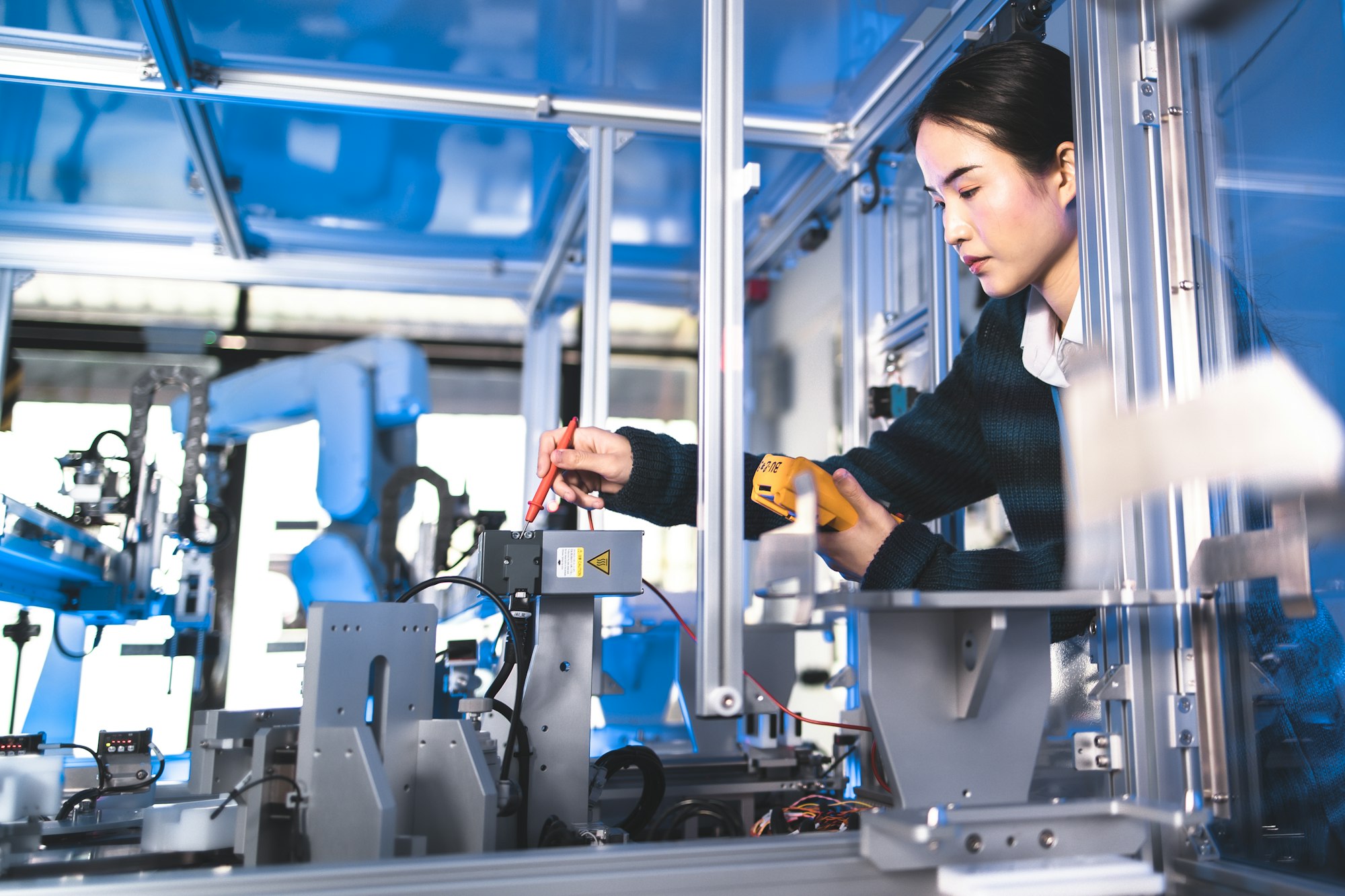AI Boosts Manufacturing Productivity
At the Osaka Ohsho factory, AI-enhanced cameras have doubled dumpling production to two per second, requiring 30% fewer workers. This example illustrates how AI can significantly enhance efficiency and mitigate labor shortages in manufacturing sectors by automating routine tasks.

AI Innovations in the Culinary Industry
The AI robot I-Robo at an Osaka Ohsho restaurant in Tokyo automates cooking for certain dishes. This reduces the need for skilled chefs, helping to counteract labor shortages in the culinary field. Such technology demonstrates AI’s potential to support high-skill industries by handling complex tasks efficiently.
AI’s Expanding Role in Agriculture
AI’s Advancements for Farming
The ageing farmer demographic in Japan has made AI tools like the Nichino AI app essential. This app diagnoses plant health, aiding in effective crop treatment and partially substituting for the decreasing number of agricultural experts.
Enhancing Farm Operations with AI
Drones used in farming for tasks like pesticide application improve operational efficiency. Farmers employing these AI solutions experience better productivity, which is crucial for maintaining agricultural output as the number of farmers declines.
AI Application in Education and Public Administration
AI Enhances Language Learning
An AI-powered tool by Ecumenopolis is used in 50 Japanese schools to improve English language learning. It customizes conversations according to the user’s level and provides instant feedback, making learning more efficient than traditional methods.
AI in Government Functions
In Yokosuka City, AI chatbots such as ChatGPT help perform administrative tasks, including document management and meeting summaries, reducing the workload and time required for public servants.
Conclusion: AI’s Potential and Limitations in Addressing Labor Shortages
AI technologies promise to transform various sectors in Japan by improving productivity and managing labor shortages. However, AI should be considered a tool to support, not replace, human workers. As Japan tackles its demographic challenges, AI serves as a critical asset in maintaining economic stability and enhancing productivity across industries.
This summary explores AI’s applications across different sectors in Japan to understand its benefits and limitations in addressing workforce challenges.

Frequently Asked Questions (FAQ)
What impact does AI have on Japan’s manufacturing sector?
AI significantly enhances productivity in manufacturing by automating routine processes. For example, at the Osaka Ohsho factory, AI-integrated cameras have doubled the production speed, making two dumplings per second and reducing the workforce by 30%. This demonstrates AI’s potential to alleviate labor shortages by streamlining production lines.
How does AI assist in Japan’s culinary industry?
In the culinary sector, AI like the cooking robot I-Robo in Tokyo’s Osaka Ohsho restaurant automates the preparation of certain dishes. This innovation not only compensates for the shortage of skilled chefs but also ensures high efficiency in cooking processes, illustrating AI’s capability to support high-skill industries.
Can AI solve the problems associated with the aging farmer demographic in Japan?
AI mitigates issues arising from the aging farmer population by providing advanced tools for efficient farming practices. Applications like the Nichino AI app help diagnose plant health problems, allowing for timely and effective treatment. Furthermore, AI-equipped drones enhance operational efficiency through precise pesticide application, thus maintaining agricultural productivity despite a declining number of farmers.
How is AI transforming education in Japan?
AI is revolutionizing education in Japan, particularly in language learning. Tools like the one developed by Ecumenopolis use AI to tailor conversations based on the student’s proficiency level and provide immediate feedback. This method has proven more efficient than traditional learning techniques, enabling faster and more effective language acquisition in schools.
What role does AI play in public administration in Japan?
AI applications in public administration, such as AI chatbots like ChatGPT in Yokosuka City, streamline routine administrative tasks including document management and meeting summarization. This not only saves time but also reduces the workload on public servants, showcasing AI’s potential to enhance productivity and efficiency in government operations.
These FAQs underscore AI’s transformative role across various Japanese industries, highlighting its effectiveness in tackling labor shortages and improving operational efficiency while also pointing out the technology’s role as a supportive tool rather than a complete replacement for human labor.
Sources BBC


